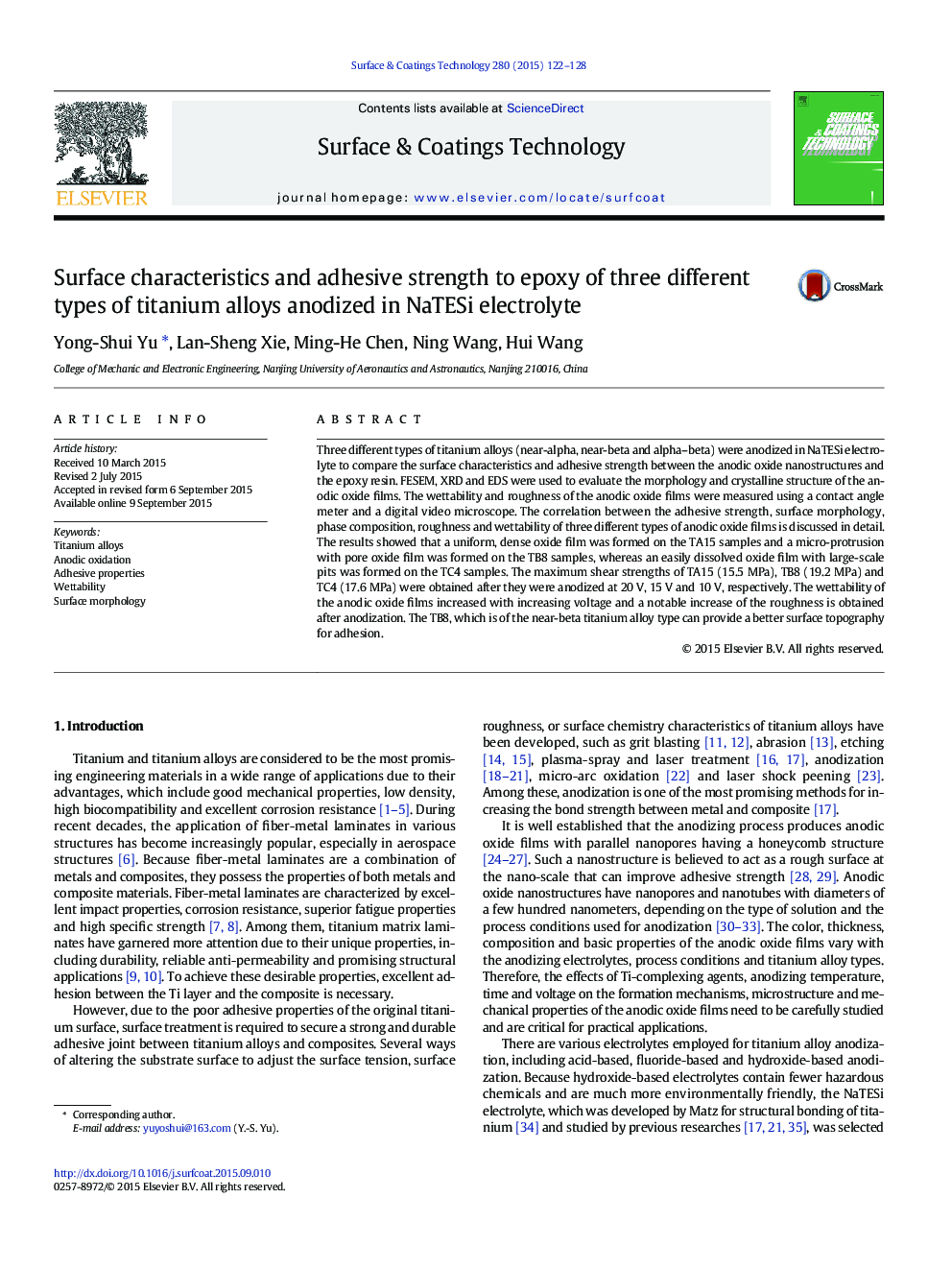| Article ID | Journal | Published Year | Pages | File Type |
|---|---|---|---|---|
| 8026078 | Surface and Coatings Technology | 2015 | 7 Pages |
Abstract
Three different types of titanium alloys (near-alpha, near-beta and alpha-beta) were anodized in NaTESi electrolyte to compare the surface characteristics and adhesive strength between the anodic oxide nanostructures and the epoxy resin. FESEM, XRD and EDS were used to evaluate the morphology and crystalline structure of the anodic oxide films. The wettability and roughness of the anodic oxide films were measured using a contact angle meter and a digital video microscope. The correlation between the adhesive strength, surface morphology, phase composition, roughness and wettability of three different types of anodic oxide films is discussed in detail. The results showed that a uniform, dense oxide film was formed on the TA15 samples and a micro-protrusion with pore oxide film was formed on the TB8 samples, whereas an easily dissolved oxide film with large-scale pits was formed on the TC4 samples. The maximum shear strengths of TA15 (15.5Â MPa), TB8 (19.2Â MPa) and TC4 (17.6Â MPa) were obtained after they were anodized at 20Â V, 15Â V and 10Â V, respectively. The wettability of the anodic oxide films increased with increasing voltage and a notable increase of the roughness is obtained after anodization. The TB8, which is of the near-beta titanium alloy type can provide a better surface topography for adhesion.
Related Topics
Physical Sciences and Engineering
Materials Science
Nanotechnology
Authors
Yong-Shui Yu, Lan-Sheng Xie, Ming-He Chen, Ning Wang, Hui Wang,
